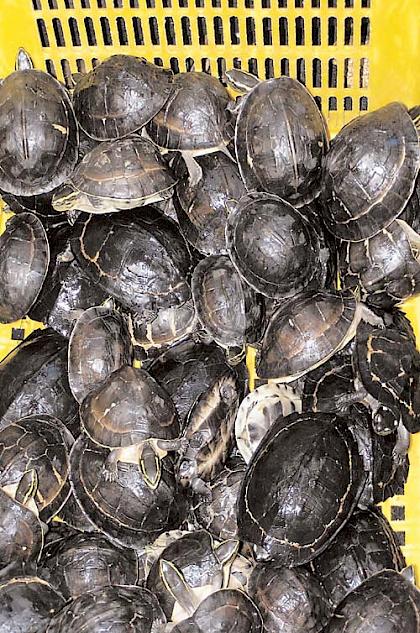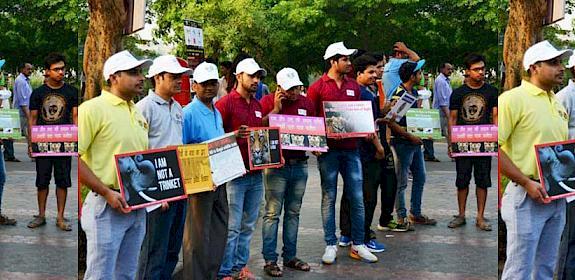New study highlights scale of international wildlife trade in Southeast Asia
Oxford, UK 23rd December 2009—More than 35 million animals listed in CITES (the Convention on International Trade in Endangered Species of Wild Fauna and Flora) were exported from Southeast Asia between 1998 and 2007, according to a study published this week in the journal Biodiversity and Conservation.

The top animal groups traded were reptiles (17.4 million), seahorses (16 million), birds (1 million), mammals (0.4 million), butterflies (0.3 million) and fish (0.1 million). There were also more than 18 million pieces and 2 million kg of live corals exported.
More than 85% (30 million) of animals were wild-caught, with Malaysia, Viet Nam, Indonesia and China the major exporters of such animals (of around 300 species), and the European Union and Japan the most significant importers.
Butterflies were the only group that was not mostly sourced from the wild.
The study analyses more than 50,000 official wildlife trade records of CITES-listed species recorded by countries who are signatories to the Convention, which includes all Southeast Asian nations.
Over the 10-year period studied, trade in most groups increased or remained stable, apart from birds, which declined.
“The decline on the wild-caught bird trade may have been partially in response to the outbreak in avian influenza (H5N1) in Asia and the subsequent EU import ban on such trade” commented Vincent Nijman of the Oxford Wildlife Trade Research Group, and author of the report.
Population growth, increased buyer power and globalization have led to a rise in demand for exotic wildlife, and this occurred in developed, emerging and developing nations alike, says the report.
“Given there are few records of illegal or undeclared international trade, and trade in many more species is not regulated through CITES, the true number of animals being traded from the region must be far higher than this analysis suggests,” said Nijman, adding that the reliability of the trade records is only as good as the data supplied by CITES Parties.
For seahorses, butterflies and corals, over 90% of all exports originate from single countries—Thailand, Malaysia and Indonesia respectively.
Single countries dominate some markets too, such as Hong Kong for the import of wild-caught seahorses and other fish, and the EU for wild-caught mammals and, prior to the ban, birds.
China, Singapore, and to a lesser degree Malaysia, are the countries that feature as importers of wild-caught wildlife, with China apparently an end destination, but Singapore (pangolins and reptile skins) and Malaysia (live birds) tending to be re-exporters.
In 2000, CITES imposed a zero quota on trade in species of Asian Pangolins, because of concerns that the number being traded internationally were leading to a decline in wild populations.
Nijman hopes his analysis of trade in the region will form the basis for assessing the levels of extraction from the wild of various animal groups, with an aim to ensure they are kept within sustainable levels.
“This study underlines how important it is for wildlife trade in the Southeast Asian region to be managed at sustainable levels to avoid negative impacts on biodiversity and ensure on-going benefits to the livelihoods of the people involved,” said Steven Broad, Executive Director of TRAFFIC
The paper, An overview of international wildlife trade from Southeast Asia by Vincent Nijman appears in the journal Biodiversity and Conservation as an advance online publication.



